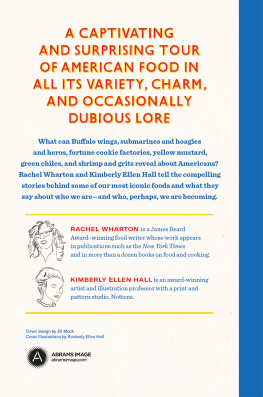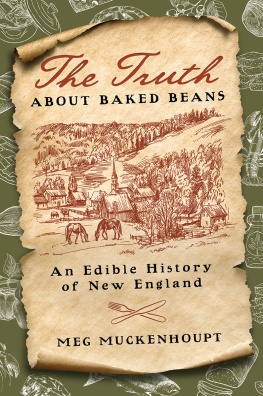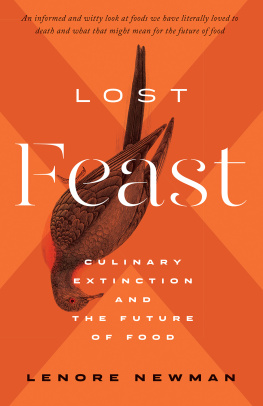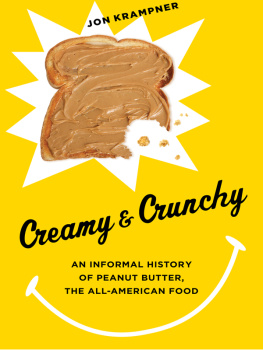Contents
Guide
Page List
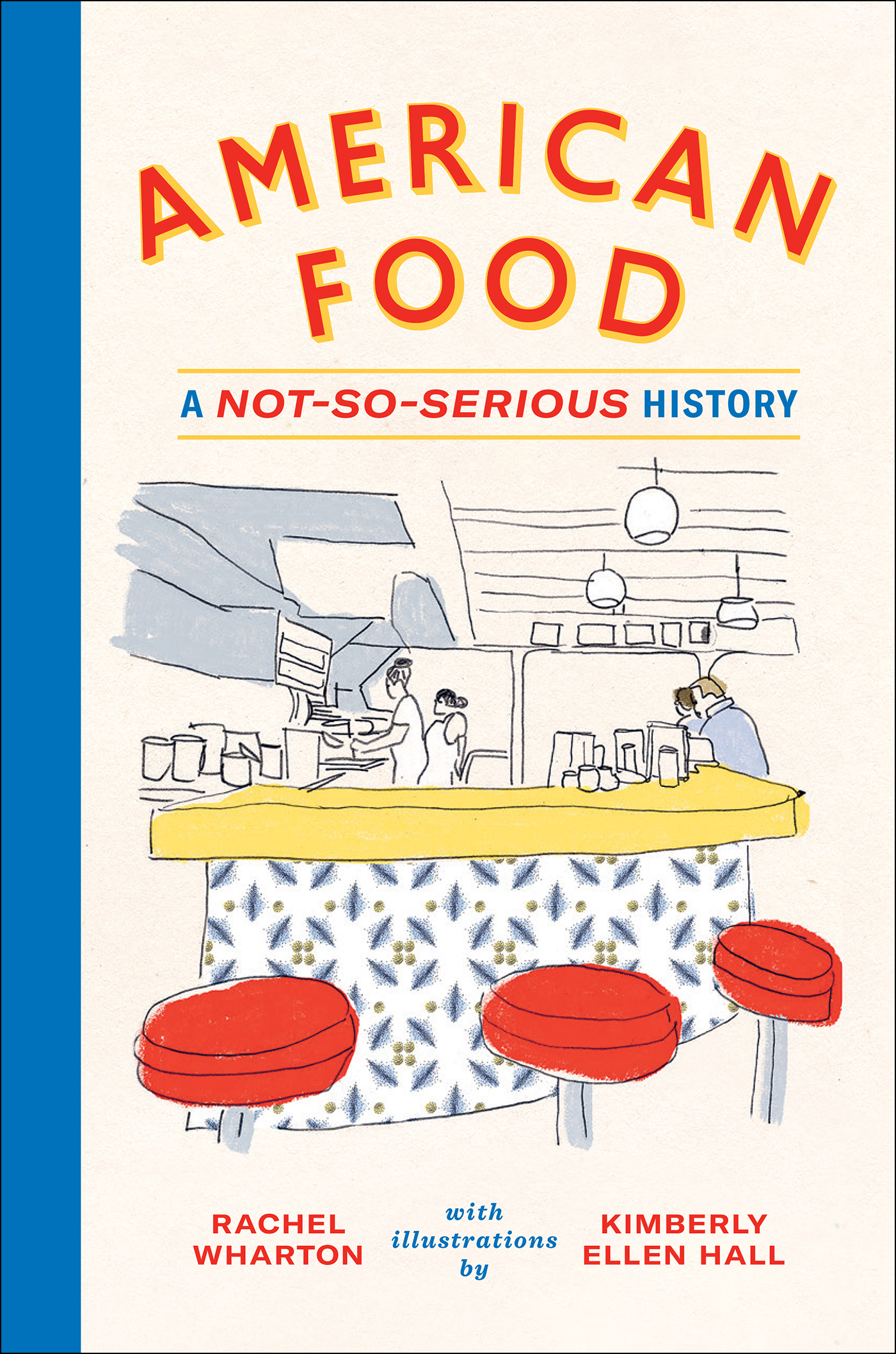
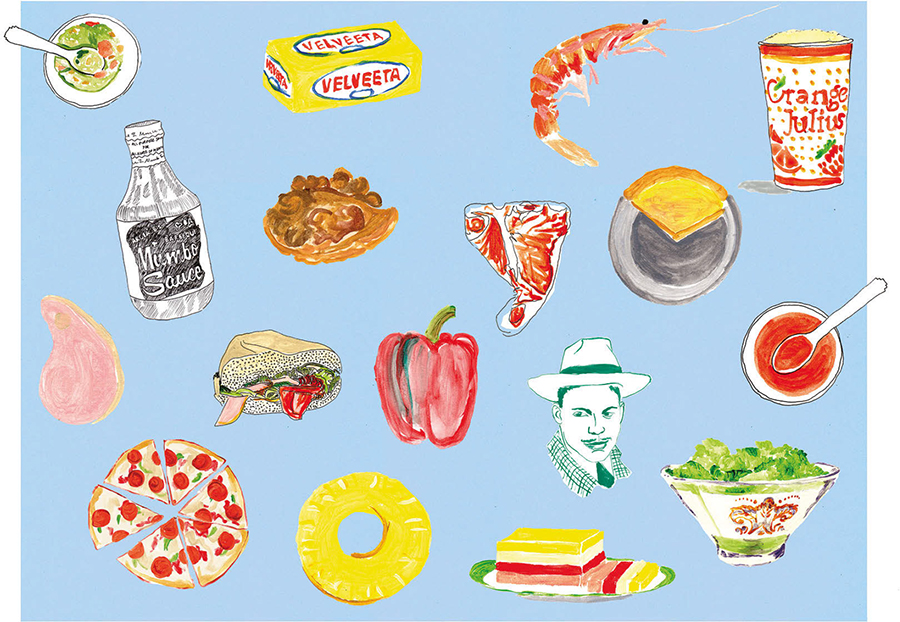
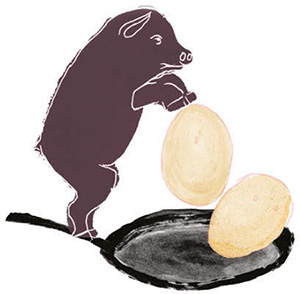


CONTENTS
AMBROSIA
Ellen the cook finally gets her due. |
BLUEBERRIES
How a cranberry farmers daughter changed the world. |
CLAMS
The slow disappearance of mya arenaria. |
DONUTS
One woman got the hole story. |
EGGS BENEDICT
Myth-making in the Gilded Age. |
FORTUNE COOKIE
A rural Japanese sweet makes it big in America. |
GREEN GODDESS
Its not easy being green. |
HOT WINGS
Meet Buffalos real king of wings. |
ITALIAN SANDWICH
By any name, its just as sweet. |
JELL-O
You know you like it. |
KETCHUP
Purity and perfection, every time. |
LUNCHBOX
They might be gone, but theyre not forgotten. |
MONTEREY JACK
He did exist, but thats not the whole story. |
NEW MEXICAN RED AND GREEN CHILES
Its at least a 3,000-year-old tradition. |
ORANGE JULIUS
Up from the ashes, and back again. |
PEPPERONI
Searching for the source of pizza topping numero uno. |
QUESO
Turns out, its from both sides of the border. |
REDEYE GRAVY
Its all about the ham. |
SHRIMP AND GRITS
Youve probably had it wrong all along. |
T-BONE STEAK
What else would you order with eggs at 3 A.M.? |
UPSIDE-DOWN CAKE
With canned fruit, it became an icon. |
VINEGAR PIE
The dirty little secret? Theyre delicious. |
THE WHITE RUSSIAN
A not-so-classy cocktail gets its fifteen minutes. |
XANTHAN GUM
Black rot saves the day. |
YELLOW MUSTARD
Were telling you, its the next big thing. |
ZUCCHINI BREAD
Carl Gohs may owe the kaffeeklatsch an explanation. |
INTRODUCTION
It might seem like a silly time to look backward, just when American food is finally getting good. After a couple of dark decades of foods that were fast and frozen or French continental, this countrys cooking isnt an international joke anymore, the kids meal in the fancy restaurant of the world.
Oh, yeah, there are still plenty of arches and kings and huts on our highways. But there are also a whole lot of Americans psyched to taste regional traditions or indigenous flora and fauna, or to learn about cooking in neighborhoods and communities that were formerly ignored by everyone who didnt live in them. Maybe the biggest and best change is that a lot of us are now finally opening up to sharing a meal (or at least some flavors) with Other People Who Dont Look Like We Do.
As my friend Gabrielle made clear in her 2017 book on contemporary cooking in the United Statesits called America: The Cookbook, and it contains eight hundred recipesAmerican food today is not just national standards, as in hot dogs and meat loaf and mashed potatoes. Which is why in her book youll also find recipes for American foods like falafel, plantain chips, pho, and injera.
But this book does not document our ever-evolving future, even though that is a very delicious thing to do. This one reconsiders our past. And with a focus on things so common that they might not even seem so interesting, at least at first. You may think you already know all there is to learn about Buffalo wings, eggs Benedict, submarines and hoagies and heros, yellow mustard, Green Goddess salad dressing, or even shrimp and grits. You might think they have little to say about who we are becoming, foodwise, or even who we are today.
But old things nearly always tell new stories. In fact, I should admit that my collaborator Kim and I chose our subjects at random, more or lesspicking one well-known American food item for every letter in the alphabet. We had guessed that almost any food eaten in this country would have a multilayered history, some forgotten twists and turns. Thankfully, we were right.

And Kim was the perfect partner, as her art helps tell new stories, too. Her own work has always focused on the beauty of the ordinary the seemingly mundane little items of the kitchen, the old community cookbooks set out with the recycling. We believe the history of American food is a lot like those community cookbooks, full of half-remembered stories and substitutions that have spiraled off into their own thing. Like those books, Kims hand-drawn illustrations have a rough, human vibe that brings a human connection to stories about a very human topic: food.
Maybe I should warn you that not all these new stories are 100 percent positivewhich is maybe why theyre the stories we should be telling the most. A lot of times in the not-so-distant past, we didnt give credit where credit was due. We forced and we stole. We ignored. We dismissed, we straight-up dissed. We even corralled and encamped. And we tend to assume what we think we know about all the latter is true.
We is often me. As in, a white American with Colonial-era roots in this country. I dont really have another home country or culture to identify with, unlike a growing majority of Americans. I resemble the sentiments expressed by social historian Alfred Crosby in the introduction to his thirtieth-anniversary reissue of The Columbian Exchange. He wrote that over the years he learned that people who didnt look like me had been appallingly mistreated by people who did look like me... and there were big pieces missing from the kind of history I was teaching. He also makes the point that looking at commonly accepted things from a new perspective is like replacing the standard film in your camera with infrared or ultraviolet film. You see things you have never seen before.
And so it was for us, working on this book. I hope itll be the same for you.

A
AMBROSIA
I know what youre thinking. How deep can a book go that begins with a fluffy fruit salad called ambrosia, whose most controversial element is whether you go mayonnaise or whipped topping instead of mini marshmallows? And, actually, that is kind of a big deal for traditionalists who consider the ur-ambrosia to be orange slices, white sugar, and hand-grated fresh coconut, as per the nineteenth-century original.
Those ingredients were still expensive when Maria Massey Barringer published the first known recipe in her 1867 cookbook, Dixie Cookery. Coconut and oranges were rare, and even the sugar may have had to be prepped and pounded because it came in a giant loaf rather than cubed or granulated.

